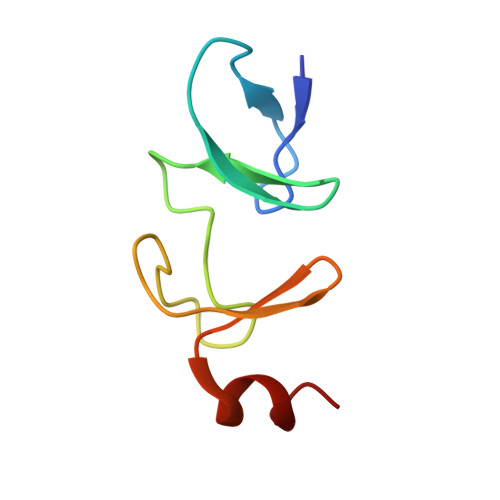Tes, a specific Mena interacting partner, breaks the rules for EVH1 binding.
Boeda, B., Briggs, D.C., Higgins, T., Garvalov, B.K., Fadden, A.J., McDonald, N.Q., Way, M.(2007) Mol Cell 28: 1071-1082
- PubMed: 18158903
- DOI: https://doi.org/10.1016/j.molcel.2007.10.033
- Primary Citation of Related Structures:
2IYB - PubMed Abstract:
The intracellular targeting of Ena/VASP family members is achieved via the interaction of their EVH1 domain with FPPPP sequence motifs found in a variety of cytoskeletal proteins, including lamellipodin, vinculin, and zyxin. Here we show that the LIM3 domain of Tes, which lacks the FPPPP motif, binds to the EVH1 domain of Mena, but not to those of VASP or Evl. The structure of the LIM3:EVH1 complex reveals that Tes occludes the FPPPP-binding site and competes with FPPPP-containing proteins for EVH1 binding. Structure-based gain-of-function experiments define the molecular basis for the specificity of the Tes-Mena interaction. Consistent with in vitro observations, the LIM3 domain displaces Mena, but not VASP, from the leading edge and focal adhesions. It also regulates cell migration through a Mena-dependent mechanism. Our observations identify Tes as an atypical EVH1 binding partner and a regulator specific to a single Ena/VASP family member.
- Cell Motility Laboratory, Cancer Research UK, London Research Institute, 44 Lincoln's Inn Fields, London, WC2A 3PX, UK.
Organizational Affiliation:


















